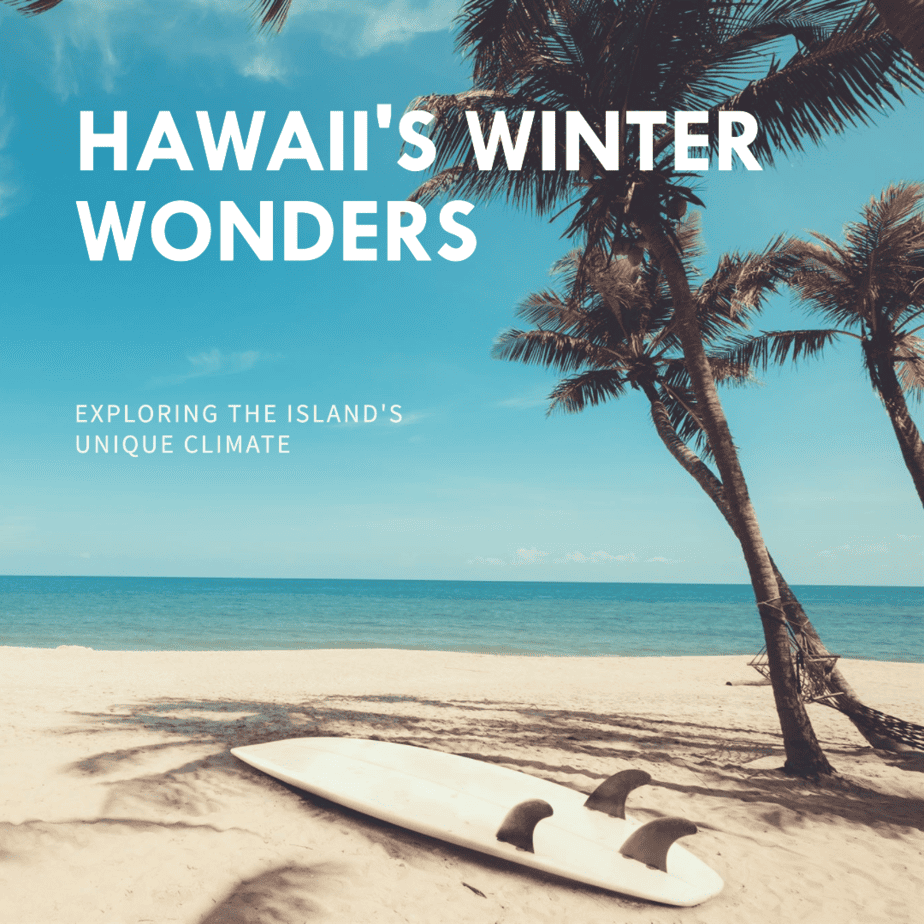Introduction
When people think of Hawaii, they often envision sunny beaches, lush landscapes, and tropical weather. However, there is a lingering question on many minds: Does Hawaii get snow? In this comprehensive article, we will delve into the fascinating topic of snowfall in Hawaii. From exploring the climatic conditions to understanding the unique geography of the islands, we will uncover the truth about whether or not snow graces the picturesque Hawaiian archipelago.
Hawaii’s Unique Climate
Hawaii’s location in the Pacific Ocean grants it a distinct tropical climate. The islands experience warm temperatures throughout the year, with the coastal regions enjoying mild and pleasant conditions. However, as we move higher in elevation, the climate undergoes a significant transformation.
The Influence of Elevation
Hawaii’s topography is characterized by towering volcanic peaks, with Mauna Kea and Mauna Loa being the most prominent. These mountains extend well above the clouds and create a unique environment that allows for snowfall.
Mauna Kea and Snow
At an elevation of 13,796 feet (4,205 meters), Mauna Kea stands tall as the highest peak in Hawaii. Its lofty height exposes it to colder temperatures, making snow a possibility during the winter months.
Mauna Kea’s snowfall is a captivating sight that attracts both locals and tourists alike. The mountain’s summit often receives a generous dusting of snow, transforming the landscape into a winter wonderland. Skiing and snowboarding enthusiasts can take advantage of this rare opportunity to enjoy winter sports in a tropical paradise.
The Trade Winds
Hawaii’s climate is heavily influenced by the trade winds, which blow from the northeast. These consistent winds bring moisture from the ocean, resulting in rainfall on the windward (eastern) sides of the islands. However, the leeward (western) sides remain drier and warmer.
The Effect on Snowfall
The trade winds play a crucial role in determining where snowfall occurs in Hawaii. As moist air rises over the windward slopes, it cools and condenses, leading to precipitation. At higher elevations, this precipitation may fall as snow.
On the leeward side, however, the trade winds descend and warm up, creating a rain shadow effect. The drier and warmer conditions on the leeward slopes make snowfall less likely.
Areas Prone to Snowfall
While snowfall is not a common occurrence in Hawaii, there are specific areas where it is more likely to happen. Let’s explore some of these regions.
Mauna Kea
As previously mentioned, Mauna Kea’s summit experiences regular snowfall. The peak’s high elevation and exposure to cold temperatures make it a prime location for winter precipitation.
Mauna Loa
Standing at 13,678 feet (4,169 meters), Mauna Loa is another volcanic giant in Hawaii. Although not as frequently as Mauna Kea, Mauna Loa’s summit can also receive snow during the winter months.
Haleakala
Located on the island of Maui, Haleakala is a massive shield volcano that reaches an elevation of 10,023 feet (3,055 meters). While snowfall at Haleakala is infrequent, it is possible for the volcano’s peak to be dusted with snow on rare occasions.
Frequently Asked Questions
-
Does Hawaii have ski resorts?
No, Hawaii does not have dedicated ski resorts. The snowfall on Mauna Kea is limited, and skiing is not a major recreational activity in the state. However, visitors can take part in snow-based activities during the winter months, such as snowboarding and sledding.
-
Can tourists access the snowy areas?
Yes, tourists can access the snowy areas of Mauna Kea, provided they have a four-wheel-drive vehicle. It’s important to note that the road to the summit is steep and unpaved, requiring caution and preparation.
-
What is the best time to see snow in Hawaii?
The best time to witness snow in Hawaii is typically between December and February. During these months, the chances of snowfall are higher, but it is always recommended to check the local weather conditions before planning a visit.
-
How long does the snow stay on the ground?
The snow on Mauna Kea’s summit can stay on the ground for several days or even weeks, depending on the weather conditions. However, it’s worth noting that the snow doesn’t accumulate to significant depths and usually melts away relatively quickly.
-
Can you build snowmen in Hawaii?
Yes, building snowmen is possible in Hawaii, particularly on Mauna Kea. Although the snowfall may not be as abundant as in colder regions, it still provides enough material for constructing small snow sculptures and snowmen.
-
Are there any dangers associated with visiting snowy areas in Hawaii?
Yes, there are potential risks when visiting snowy areas in Hawaii. The extreme cold temperatures and icy conditions at higher elevations can pose hazards to inexperienced visitors. It is important to dress warmly, bring proper equipment, and exercise caution when exploring these areas.
Conclusion
In conclusion, while Hawaii is renowned for its tropical climate and stunning beaches, it does indeed experience snowfall in certain regions. The elevated peaks of Mauna Kea, Mauna Loa, and Haleakala offer visitors and locals the opportunity to witness the rare phenomenon of snow in a tropical paradise. However, it’s important to note that snowfall in Hawaii is limited, and it doesn’t occur across the entire archipelago. So, if you’re planning a trip to Hawaii in search of snow, be sure to check the local conditions and prepare accordingly for an unforgettable experience.
Recent Posts
I. Introduction: The Ultimate Guide to Exploring the Hidden Gems of Hawaii Unveiling Hawaii's Popular Attractions: A Brief Overview Hawaii, the picturesque archipelago in the heart of the Pacific...
Are there Mosquitoes in Hawaii? The Shocking Revelation You Need to Know!
Are There Mosquitoes in Hawaii? Introduction Hawaii, with its stunning beaches, lush landscapes, and tropical climate, is a dream destination for many. However, before packing your bags and heading...


